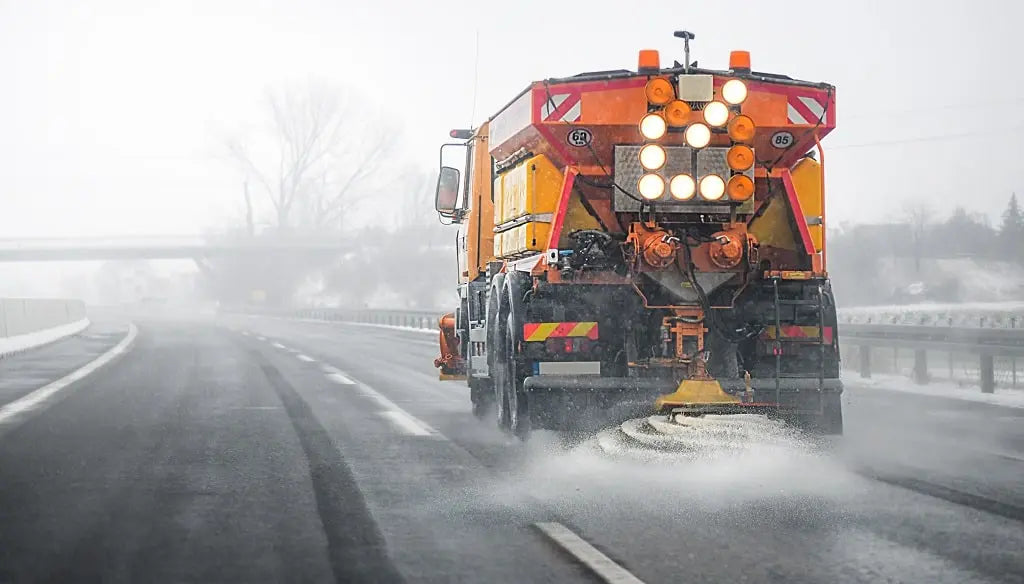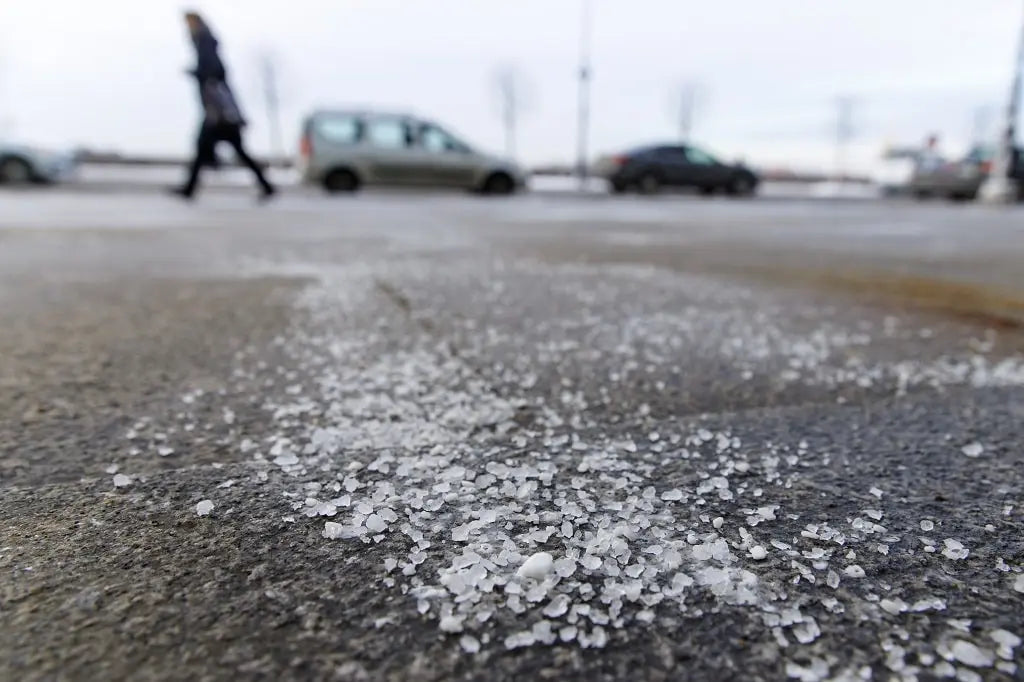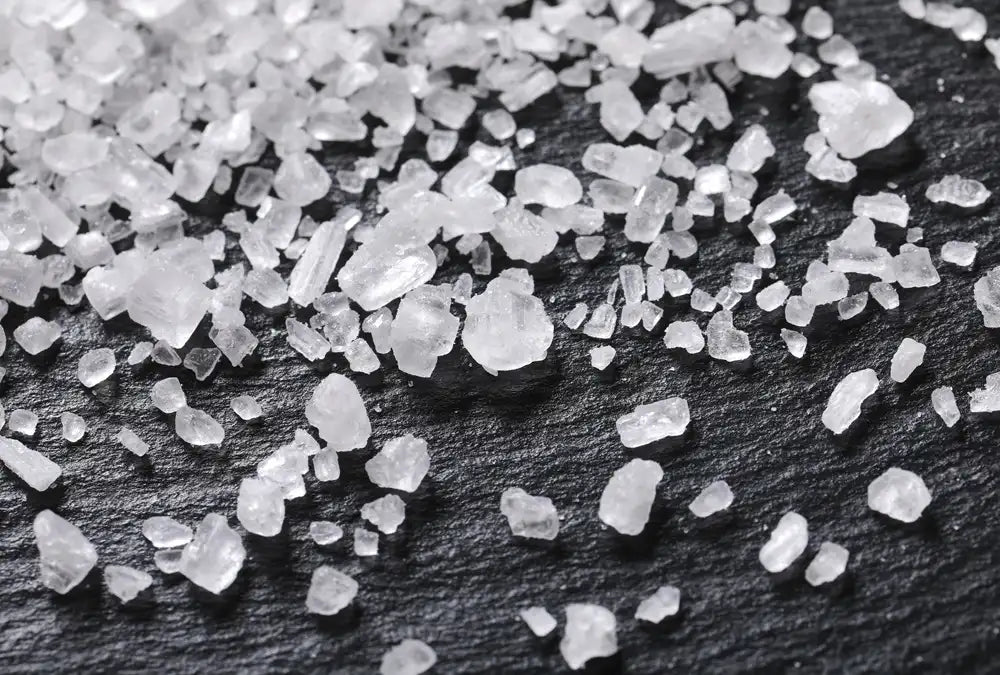
Ice Management for Municipalities and Highway Departments: Best Practices
In the 1970s, transportation agencies nationwide recognized the financial and environmental impacts associated with the massive use of road salt for ice management. Since then, extensive research has been conducted to document and enhance the process of maintaining ice-free roads. Staying updated on the latest techniques and equipment can be challenging, so Ninja De-Icer has done the job for you! We have a wealth of knowledge on using salts responsibly and have extensive experience supplying salt to municipalities. Let’s get started!
How to Maximize the Impact of Your Road Salt
Snow and ice removal in the winter is a must, and there are a few different approaches to achieving clear sidewalks, parking lots, and roads. We've outlined some municipal government de-icing techniques.
Use Anti-Icing
One snow and ice removal technique is to use anti-icing materials. There are many departments of transportation that have started to use liquid salt brine to pre-treat roads before storms hit. According to estimates, pre-treating the road with brine can save as much as 75% of the total volume of salt that is applied.
During the anti-icing process, the product is applied proactively to the pavement before the snow begins to fall. The goal is to discourage the bond that's established between the snow and the pavement from fully forming. Only a small amount of product is necessary to achieve this rather than applying a higher volume of a product once the bond has already formed.
Try Pre-Wetting

Another way to approach de-icing is pre-wetting. By pre-wetting the salt before applying it on the road, it can reduce the scatter and bounce of the product as it hits the road surface. Not to mention, by pre-wetting, you are activating the salt and ensuring it works more quickly when the snow or ice hits it.
Calibrate the Equipment
The calibration process allows you to measure the specific amount of material that you apply. This helps to facilitate a more accurate and efficient de-icing process while using less salt. We suggest calibrating each of your pieces of equipment at the beginning of the season and anytime maintenance is done to them to ensure the correct amount of salt is being applied. Calibration procedures should ideally be a standard component of training for salt truck operators.
Store Salt Properly
How you store salt is a part of the approach that shouldn't be overlooked. Proper storage can help minimize salt loss and pollution. Many privately owned facilities and municipalities can protect salt investments and the environment by implementing a few simple measures. Make sure to build salt storage sites on impervious surfaces, keep salt away from moisture and temperature fluctuations, ensure the product is covered at all times, and regularly check structures for any damage.

Looking for Bulk Rock Salt for Municipalities?
Look no further! Ninja De-Icer offers top-quality products and exceptional service to help you find what you need.
Get a Quote TodayHow to Apply Rock Salt with Less Harm
Rock salt can be applied strategically so it is effective at removing snow and ice while causing the least amount of harm.
Here are some tips to keep in mind when applying your de-icer:
- Apply the product before the ice and snow start to accumulate on the road's surface.
- Get rid of as much snow and ice as possible before you apply the de-icer.
- Follow the directions on the label. For example, there might be a suggested use for how much salt to apply per lane mile or per acre. Using additional products won't be more effective, it will only be more expensive.
- If you have salt-sensitive vegetation, avoid using rock salt within 5-10 feet.
Road Salt Alternatives

Rock salt isn't the only option for taking care of municipal government snow and ice management.
Here are some rock salt alternatives:
- Calcium chloride is often a preferred choice over rock salt for a few reasons. While calcium chloride is more expensive than rock salt, you'll only need to use one-third as much, so you won't be losing value. Calcium chloride is also effective in extremely cold weather conditions, as it works in temperatures as low as -25ºF.
- Magnesium chloride is seen as the least toxic de-icing product, as it has less chloride than both rock salt and calcium chloride. This makes it a safer option for animals and plants. Magnesium chloride is also effective in lower temperatures as low as -20ºF.
- Liquid de-icer serves as a great road salt replacement. It is easy to apply and a cost-effective option. Using blends with additives like calcium chloride it is a fast-acting formula that quickly melts ice and prevents its formation, providing efficient and safe road conditions during winter.
| Type of De-icer | Key Features | Temperature Efficiency | Cost Comparison | Environmental and Safety Impact |
|---|---|---|---|---|
| Calcium Chloride | Significantly more effective than many alternatives. | Works in temperatures as low as -25ºF. | Greater than rock salt but need less product. | Lower environmental impact than rock salt, being less harmful to vegetation and water sources. |
| Magnesium Chloride | Least toxic, less chloride content. | Effective in temperatures as low as -20ºF. | Less product is required for the same level of ice melt compared to rock salt. | Safer for animals and plants, lower environmental impact. |
| Liquid De-Icer | Easy to apply, cost-effective. | Fast-acting, prevents ice formation. | Higher upfront cost, but cost-effective in the long run. | Efficient and safe for road conditions in winter. |
Innovative Solutions for Municipal Ice Management
There are quite a few de-icing product options for municipal ice management, and we’ve listed a few excellent choices below:
- Thunder Melt Treated Salt: Thunder Melt Ice Melter serves as a powerful alternative to traditional rock salt, with a blend of sodium chloride treated with calcium chloride and coated with a corrosion inhibitor to ensure quick and efficient ice melting. Effective even at temperatures as low as -16°F, this violet-colored ice melter enhances visibility during application. Thunder Melt Ice Melter quickly liquifies upon contact with the ground, making it ideal for use in colder temperatures faced by municipal ice management.
- Lightning Premium Treated Salt: Lightning Premium Ice Melter is a traditional rock salt coated with magnesium chloride and coated with a corrosion inhibitor, it quickly and efficiently melts ice. Effective even at temperatures as low as -20°F, this aqua-colored ice melter enhances visibility during application. Its powerful formula allows municipalities to use up to 50% less product, as it liquifies instantly upon contact and remains effective even in the coldest temperatures.
- Max Blue Treated Salt: Max Blue Treated Salt is a highly effective alternative to traditional rock salt for municipal and highway departments' ice management needs. Comprised of a blend of sodium chloride and magnesium chloride, this blend is fast-acting and initiates the melting process upon application. It not only helps prevent stockpiles from freezing and clumping but is also often dyed blue to enhance visibility during spreading operations.
- Headwaters® SF40: Headwaters SF40 is a liquid de-icing product, composed of 100% chloride-free sodium formate with a corrosion inhibitor, this non-toxic formula rapidly melts snow and ice without the corrosive effects of chloride-based products. Effective at 15°F, it is biodegradable, non-corrosive, safe for new concrete, and pet-friendly. With its colorless and free-flowing nature, Headwaters® SF40 perfectly balances performance, environmental impact, and cost, making it an optimal choice for municipal ice management.
Additional Tips for Municipal and Highway Departments Ice Management

Here are some general tips to keep in mind before the thick of winter hits:
- Buying in advance: Purchase de-icer materials well in advance of winter storms to ensure an adequate supply, avoiding shortages during peak demand periods.
- Product selection: Choose ice melts that are suitable for the specific conditions in your area, considering factors such as effective temperature range and environmental impact.
- Calibration: Regularly calibrate application equipment to ensure accurate and consistent coverage, optimizing the effectiveness of de-icing products.
- Making sure equipment is ready to use: Look over any contractor’s equipment and be sure to install GPS or tracking systems into your vehicles so you can deploy them without a delay in the case of winter weather.
- Using emergency purchase acquisitions (EPAs): In the case that there’s a winter weather event that exceeds your resource and equipment capabilities, use EPAs to bring in more resources.
Enhance Municipal Ice Management with Ninja De-Icer
With the right tools, efficient de-icers, and reliable partners, you can effectively tackle municipal ice management with reduced stress and hassle. At Ninja De-Icer, we take pride in being a trusted bulk rock salt wholesaler, dedicated to assisting municipalities and highway departments in their winter maintenance efforts. Our team is ready to provide you with quality products and expert guidance. If you're interested in working with us, contact us today to get a quote and discover the difference Ninja De-Icer can make for your municipality.



